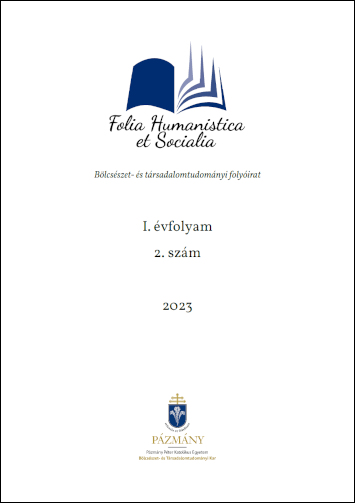St. Luke Paints the Madonna: The Question of Artistic Identity in Early Low Countries Painting
Published 31-12-2023 — Updated on 11-06-2024
Copyright (c) 2023 Szenes Anna

This work is licensed under a Creative Commons Attribution 4.0 International License.
Abstract
In Rogier van der Weyden's St. Luke Painting the Madonna, many people believe that Luke is Weyden's actual or implied self-portrait. The figure of the painter-saint offered an opportunity for self-determination on the part of the believer-painter, and this inspired countless artists to create their own Luke. Initially portrayed with his painting in his hand, by the 15th century he was seen as a humble craftsman proud of his profession. Finally, from the beginning of the 16th century, he is no longer seen as a humble saint or a skilled craftsman, but as an artist of divine approval.
In order to better understand how St Luke became the alter ego of the artists of the German Low Countries, we must first examine how he went from being a simple evangelist to a saintly painter, starting from a study by Anna Eörsi (2003). Accordingly, I would like to examine the role of the figure of Luke in profane and, in sacred iconography as well. I would then study Rogier van der Weyden's Boston prototype. Finally, I would present the northern images of Luke associated with the Saint Luke tradition, more than one of which was based on Weyden's composition.
References
- Belting, H. (2000). Kép és kultusz. Balassi Kiadó, 21.
- De Vos, D. (1971). De Madonna-en Kindtypologie bij Rogier van der Weyden en Enkele Minder Gekende Flemalleske Voorlopers. Jahrbuch der Berliner Museen (13), 123-125. https://doi.org/10.2307/4125723
- Eörsi A. (2003). The Incarnation of the Word and of the Form. Some Thoughts about St Luke the Painter, and about some Painters of St Luke. Acta Historiae Artium (44), 47-57. https://doi.org/10.1556/ahista.44.2003.1-4.6
- Gonda Zs. (szerk.). (2005). Kép a képben: művész és közönség öt évszázad grafikusművészetében Burgkmairtól Picassóig. Budapest, Szépművészeti Múzeum, 44-46.
- Ishikawa, C. (1990). Rogier van Der Weyden’s ‘Saint Luke Drawing the Virgin’ Reexamined. Journal of the Museum of Fine Arts, Boston 2, 49–64.
- Kann, A. (1997). Rogier’s St. Luke: „Portrait of the Artist or Portrait of the Historian?”. In Carol Jean Purtle (szerk.), The Museum of Fine Arts, Boston Rogier van der Weyden St. Luke Drawing the Virgin. Selected Essays in Context, Turnhout, Brepols, 15-21.
- King, C. (1985). National Gallery 3902 and the Theme of Luke the Evangelist as Artist and Physician. Zeitschrift Für Kunstgeschichte 48(2), 249–255. https://doi.org/10.2307/1482280
- Marrow, J. (1997). Artistic Identity in Early Netherlandish Painting: The Place of Rogier van der Weyden’s St. Luke Drawing the Virgin. In Carol Jean Purtle (szerk.), The Museum of Fine Arts, Boston Rogier van der Weyden St. Luke Drawing the Virgin. Selected Essays in Context, Turnhout, Brepols, 53-57.
- Olds, C. (1990). Jan Gossaert’s ‘St. Luke Painting the Virgin’: A Renaissance Artist’s Cultural Literacy. Journal of Aesthetic Education 24(1), 89–96. https://doi.org/10.2307/3332857
- Panofsky, E. (1953). Early Netherlandish Painting: Its Origin and Character. Cambridge Mass, 253-256.
- Schaefer, O. J. (1986). Saint Luke as painter: from saint to artisan to artist. Artistes, Artisans et production artistique au Moyen Age, Colloque international, org. par X. Barral i Altet, I-III, Paris, Vol. I. 413-427.
- Voraigne, de J. (2004). Legenda Aurea. Ford.: Bárczi Ildikó et al., Budapest, Neumann Kht.
- White, E. M. (1997). Rogier van der Weyden, Hugo van der Goes, and the Making of the Netherlandish St. Luke Tradition. In Carol Jean Purtle (szerk.), The Museum of Fine Arts, Boston Rogier van der Weyden St. Luke Drawing the Virgin. Selected Essays in Context, Turnhout, Brepols, 39-48.
- Woods-Marsden, J. (1998). Renaissance Self-portraiture. The Visual Construction of Identity and the Social Status of the Artist, New Heaven, Yale University Press, 25-26, 204-206.

